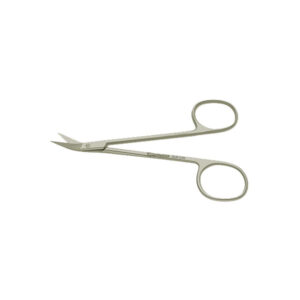According to data collected by the Heart, Trauma, and Sepsis Research Laboratory, “310 million major surgeries are performed each year worldwide and around 40 to 50 million in the USA.” It indicates that a large number of people undergo surgical procedures each year.
The increased number of surgeries globally has resulted in an increased demand for surgical instruments. In this respect, the use of utility scissors has also up surged as surgeons need them to cut non-biological materials. Therefore, they are an essential component of a surgical tool kit.
This blog will enlighten you on different aspects that make them a crucial part of the surgical toolkit. So let’s start our discussion with their importance.
Why Are Utility Scissors So Important?
It is one of the most valuable surgical instruments in operating rooms. Surgeons need it to cut rigid non-biological materials made of plastic or cotton during surgical procedures. Its sharp blades quickly cut thick materials to add ease for the surgeons.
It also helps surgeons to cut the desired lengths of bandages, wound dressings, and stitching threads. Furthermore, the availability of its multiple variations makes it a perfect fit for the surgical tool kit.

To understand its importance completely, let’s look at its uses.
Uses
The uses of this multipurpose surgical tool are the following.
- Surgeons use it to cut dressings, bandages, and medical gauze.
- It features a blunt tip on the bottom blades that slide under the bandages making bandage removal quick, easy, and safe.
- Its sharp upper blade cuts thick materials difficult to cut with other scissors.
- Its finger ring handles provide easy handling of the tool, as a perfect grip over it reduces the chances of slippage and accidental injuries.
- This tool’s most significant advantage is ensuring patient safety by keeping the nearby tissues intact.
On top of that, its different types perform different functions during surgeries. So, next, learn about its different types to know more about their importance.
Major Categories
There are various types of utility scissors, each with unique features, styles, and functions. They have two major categories: based on patterns and shapes. The types of these scissors are
Based On Patterns
The following are the types of this surgical tool based on their unique patterns.
1. Wilmer Conjunctival and Utility Scissors
It is an incredible eye surgical tool surgeons use to cut thick materials during ophthalmic procedures. It has a long shank attached with finger ring handles. The sharp pointed ends and serrated blades of this tool make it perfect to use during eye surgeries.
The total length of the tool is 4 inches, and its finger ring handles have a polished finish. Also, it is made of German stainless steel, making it rust and corrosion-proof.
2. Cushion Handle Utility Scissors
Surgeons use these scissors during various surgical procedures because of their smooth cutting action. Its unique design makes it one of the most versatile surgical scissors. Its propylene finger ring handles provide excellent control to hold it during surgeries.
The tool offers extra protection with its rounded blade tips. Additionally, it features black handles that show high tensile strength. On top of that, it is easily sterilizable as it is made of German stainless steel.
3. Ribbon Utility Scissors
They are common for cutting and dissecting soft tissues during various surgical procedures. Their extra-large finger ring handles and flat shanks make handling easy. They also come in a variety of variations, giving surgeons more options.
The surgical tool requires little maintenance and is durable because German stainless steel is used in its manufacturing. Above all, it has short and sharp blades for the precise cutting of delicate tissues.
Based on Shapes
The types of utility scissors based on shapes are as follows.
1. Utility Scissors Curved
Surgeons use these scissors to cut non-biological objects such as plastic wires and vacuum tubing. Their delicate tips make them more secure to use, and their versatile nature makes them perfect for various surgical procedures.
Moreover, the surgical tool is resistant to rust and corrosion because it is made of German stainless steel. Its surface is also inert to many chemical reactions, making it more resilient.
2. Utility Scissors Straight
The multipurpose Utility Scissors Straight assists surgeons in cutting non-biological materials during multiple surgical procedures. They feature delicate, unique tips for providing extra protection during the surgery. Their finer ring handles also provide an efficient grip over the tool for better surgical outcomes.
The surgical instrument has high tensile strength and requires little maintenance. Over and above that, it is sterilizable, and surgeons can use it multiple times after proper cleaning and disinfection.
Wrapping Up!
Surgeons use multiple surgical instruments to perform surgical procedures. Different surgical tools have distinct features and shapes depending on their functions. However, the feature that matters most in every surgical tool is its high quality because it determines the success of the surgical procedure.
For this reason, surgeons always look for a reliable source to get top-notch surgical tools. If you are also a surgeon and looking for quality utility scissors, you may approach GerMedUSA. They have been manufacturing and supplying surgical instruments for the last three decades.
Supplementary, you can customize the surgical tools in innovative designs to meet your specific demands. All their tools are made of German stainless steel, making them rust and corrosion-proof. Not only that, but their surfaces are also inert to many chemical reactions.
Their tools are also sterilizable and reusable. In addition, they are lightweight and require low maintenance when appropriately handled. So, use high-quality surgical instruments to improve your surgical outcomes.







